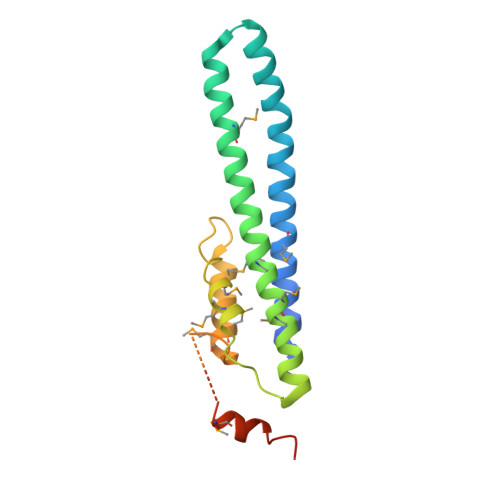Structural Basis for Budding by the ESCRT-III Factor CHMP3.
Pineda-Molina, E., Ravelli, R.B., Zamborlini, A., Usami, Y., Weissenhorn, W.(2006) Dev Cell 10: 821-830
- PubMed: 16740483
- DOI: https://doi.org/10.1016/j.devcel.2006.03.013
- Primary Citation of Related Structures:
2GD5 - PubMed Abstract:
The vacuolar protein sorting machinery regulates multivesicular body biogenesis and is selectively recruited by enveloped viruses to support budding. Here we report the crystal structure of the human ESCRT-III protein CHMP3 at 2.8 A resolution. The core structure of CHMP3 folds into a flat helical arrangement that assembles into a lattice, mainly via two different dimerization modes, and unilaterally exposes a highly basic surface. The C terminus, the target for Vps4-induced ESCRT disassembly, extends from the opposite side of the membrane targeting region. Mutations within the basic and dimerization regions hinder bilayer interaction in vivo and reverse the dominant-negative effect of a truncated CHMP3 fusion protein on HIV-1 budding. Thus, the final steps in the budding process may include CHMP protein polymerization and lattice formation on membranes by employing different bilayer-recognizing surfaces, a function shared by all CHMP family members.
- European Molecular Biology Laboratory, 6 rue Jules Horowitz, 38042 Grenoble, France.
Organizational Affiliation:

















